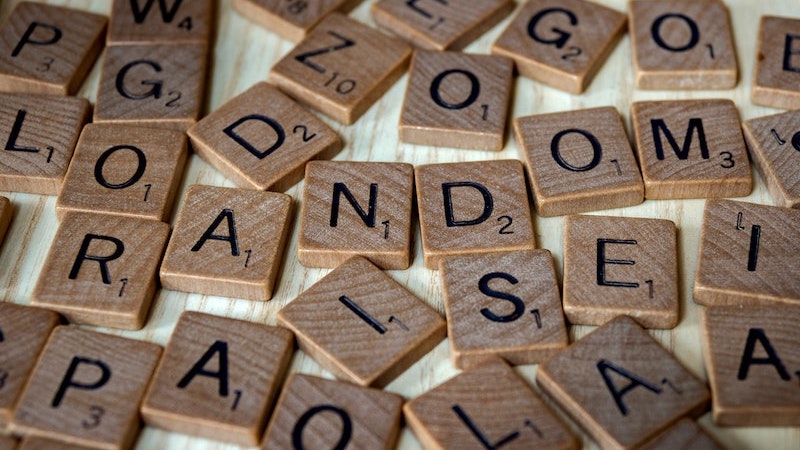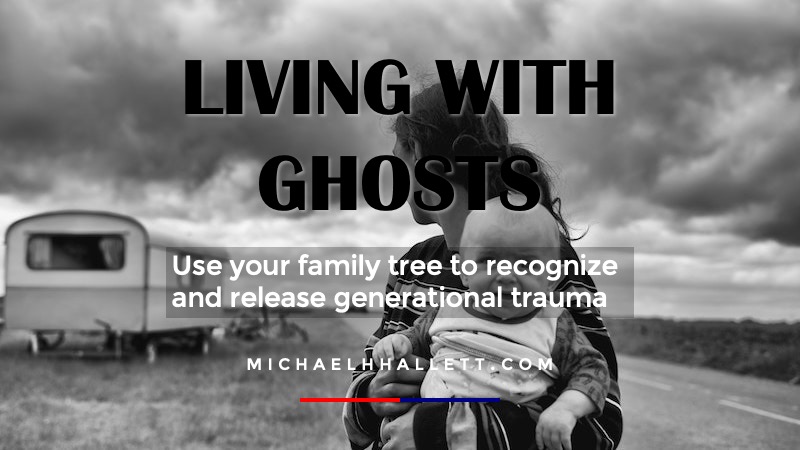None of our emotional wounds are random
- 5 April 2021
- Posted by: Michael H Hallett
- Category: Emotional principles , Generational trauma ,

When we survey the seething maelstrom of human behaviour, it’s hard to see it as anything other than random. Even if we restrict ourselves to our own life and those closest to us, it may still seem that what we’re witnessing is haphazard. Yet this is a false randomness. When we achieve clarity, we find that none of our emotional wounds are random.
Your wounds aren’t random, like a bad draw in the scrabble game of life. They are a highly precise manifestation of the unhealed traumas incurred by you and your ancestors.
How do we go about achieving the kind of clarity that shows our wounds aren’t random?
Connecting the dots
We have to do what Steve Jobs calls connecting the dots backwards. In his famous commencement speech at Stanford University in 2005, Jobs said that “You can’t connect the dots looking forward; you can only connect them looking backwards.”
The dots I’m referring to here are the data points of emotional behaviour stretching back as far as we can remember into our childhood. They’re like a Hansel and Gretel paper trail that allows us to get back to their source. By following them we can identify recurring patterns and triggers, like a master sleuth uncovering vital clues.
“You know my method. It is founded upon the observance of trifles.”
— Sherlock Holmes
Seemingly random wounds
To deconstruct your seemingly random wounds, you only need to understand three things:
- All emotional wounds stem from trauma
- The sources of trauma are limited
- Our lives are constant feedback loops
Let’s look at these in turn.
1. All emotional wounds stem from trauma
No one is ever wounded out of nowhere. All wounds stem from some source outside of us that causes a wound. An emotional wound that can’t heal is called a trauma. The trauma in turn drives wounded behaviour. This can be destructive to ourselves and/or to others.
Given that all trauma has a source, what are those sources?
2. The sources of trauma are limited
In Trauma exists as a series of ripples, I describe how the various sources of trauma in our lives are like concentric ripples of woundedness that interpenetrate each other, bouncing off, reinforcing and repeating over time.
The key sources of trauma are:
- Current-life trauma—trauma from known events in our lifetime
- Generational trauma—trauma inherited from recent ancestors, typically our parents and grandparents
- Community trauma—inherited trauma common to an entire community that’s been traumatised, e.g., the ‘troubles’ in Norther Ireland, gypsy and traveller communities, and native cultures
- Racial trauma—inherited trauma that’s shared by an entire race
- Ancestral trauma— trauma inherited from remote ancestors, up to several thousand years old, that affects everyone living in patriarchal societies
To this we could add a layer of gender trauma—the way that patriarchy has traumatised men and women in different ways, leading to different forms of wounded behaviour.
Once we know that our wounds originate in one of these layers, it’s a process of elimination.
3. Our lives are constant feedback loops
Because of the ‘concentric ripple’ effect—traumas with different sources feeding off each other—it can be hard to isolate specific wounds. This is part of what makes our wounds seem so random.
How can we separate out our wounds? How can we tell the wave from the ocean?
By working with the principle that our lives are constant feedback loops.
Our wounds constantly demand our attention by surfacing in our lives. It can be it our thoughts, feelings or behaviours. They can show up as aches and pains or repeating patterns of destructive behaviour like job losses, marriage breakdowns or financial mismanagement. Sigmund Freud, the founder of psychoanalysis, called this ‘the return of the repressed’.
These unwanted manifestations of our wounded unconscious are our doorway to healing.
A framework for healing trauma
By orienting ourselves towards recognising the trauma in our lives we begin to heal.
Healing trauma is like a jigsaw puzzle. The more you heal, the easier it gets to identify how the remaining pieces fit in. What began as a random collection of wounds slowly turns into the beautiful mosaic of your personal healing journey.
Your wounds aren’t random, like a bad draw in the scrabble game of life. They are a highly precise manifestation of the unhealed traumas incurred by you and your ancestors, right back to the dawn of patriarchy several thousand years ago.
ONLINE COURSE

Photo by Brett Jordan on Unsplash
